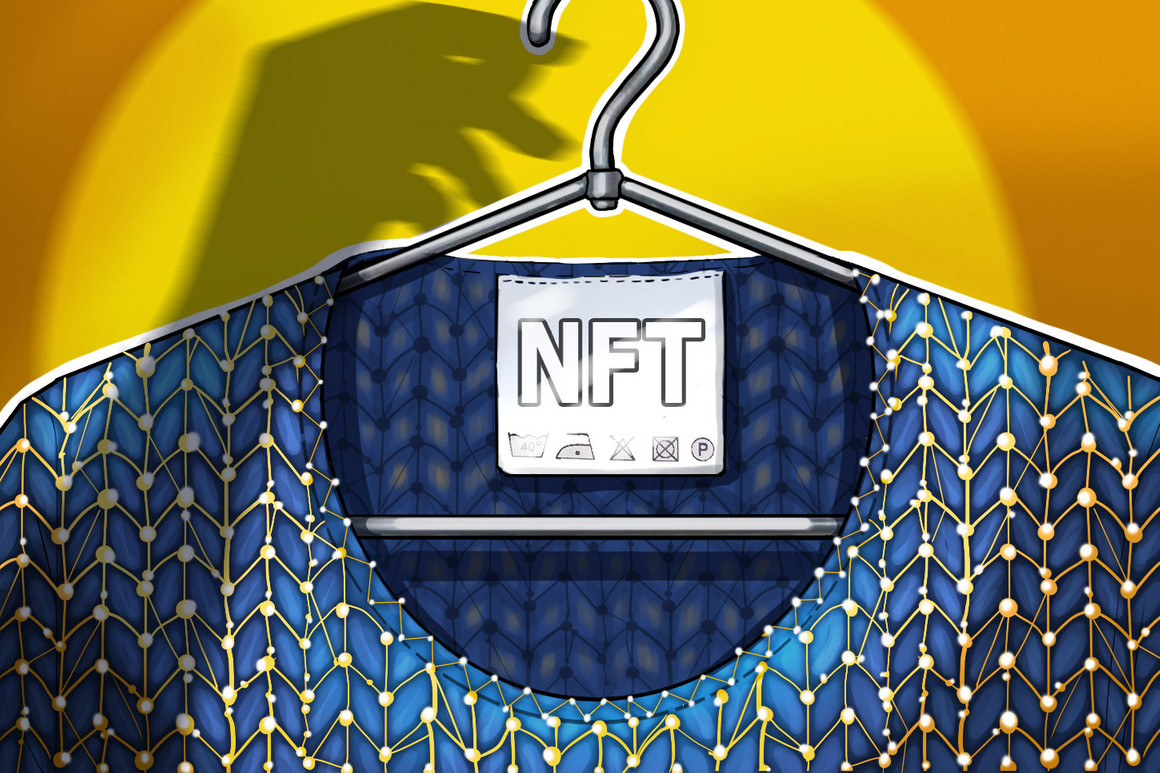TL; DR:
-
Currency devaluation is when a country’s monetary authority deliberately adjusts the official exchange rate, reducing the currency’s value.
-
This deliberate action attracts foreign business investment because of the lower costs of doing business within that country.
-
Increased capital inflows spur economic growth but can lead to inflation.
-
Traditional hedges to offset inflation impacts resulting from devaluations have included real estate investment, ETFs, gold, silver, and other commodities.
-
Crypto is an emerging asset class as a hedge, providing some protection for currency devaluation, liquidity and convenience.
-
Crypto adoption is still growing, and until it stabilizes, there can be volatility and uncertainty along the way. Always perform your own due diligence before investing.
Whether we realize it or not, globalization touches us all.
In this cross-border world, countries must regularly reassess how international trade impacts their own economies so that a healthy balance and equilibrium can be maintained to protect their own citizens.
In achieving this balance, governments often deploy a monetary policy tool known as “currency devaluation.” But what exactly is this and how does it work? In this piece, we explore everything from what currency devaluation is to the effects and impacts of a devaluation. Lastly, we discuss what you can do as an investor to best protect yourself during these challenging times.

Currency Devaluation Basics
In the beginning, there was the “gold standard.” The gold standard was like a promise that governments made to their people. Each unit of currency held by a country following the gold standard was backed by a set unit of gold. Many of the world’s most powerful countries were on the gold standard, including the United States. At the turn of the 20th century and through the first three decades, gold prices in the US would be set at $20.67 per ounce. However, this eventually changed, as with the support of President Franklin D. Roosevelt, the country was taken off of the standard on June 5th, 1933.
As a result, gold prices were reset to $35 per ounce by the mid-1930s. By the time Richard Nixon became US President and ended the convertibility of US dollars into gold, prices for the precious metal really took off.
Why does this matter? Well, because ever since the gold standard was abandoned and world currencies were allowed to have their exchange rates float freely against each other, governments far and wide have deployed various monetary policies to deliberately adjust a country’s official currency exchange rate. These deliberate adjustments, oftentimes performed in a manner that reduces the local currency’s value, is what is known as currency devaluation.
Why Do Countries Deliberately Devalue Their Currency?
It may sound odd – but a strong currency does not necessarily work in the best interests of a country or its people. While a strong currency at home means that one’s purchasing power is greater abroad, the reverse is true for everyone else outside of that country.
Alternatively, while a weaker domestic currency would mean that everything abroad becomes more expensive for its local residents (relative to the local currency), the country would actually become more economically competitive. Foreign businesses would view these countries to be cost-effective in doing business, and such nations would be viewed more desirably in terms of increasing foreign investments within their borders. Such inflows of capital would spur economic growth by creating new jobs, increasing exports, and bringing even more money into the local economies.
Additionally, while devaluation may reduce the local population’s purchasing power abroad, the side effect of that is that residents are more inclined to purchase within their own borders – thereby putting the money back into their own economies and further increasing the economic strength of their countries. Fewer imports will reduce any trade deficits that a country may be facing, thereby reducing the debt levels of the country.
Lastly, in the event that a country has issued sovereign bonds, the issuing country may be highly incentivized to devalue its currency in order to reduce its debt burden.
What Are the Negative Effects of Devaluation?
So far, it seems like the positive effects of a currency devaluation outweigh the negative effects. But for every action, there is a reaction, and the use of currency devaluation as a tool is no different.
One of the most common negative outcomes for an economy after a currency devaluation is the rise of inflation. While currency devaluations often lead to increased domestic spending, it does not mean that imports stop. Due to a devaluation, the cost of imported goods will naturally increase. These costs, which can be passed along to the end consumer, will drive prices upward for various goods and services. In conjunction with this, aggregated demand for local products will also increase given the rise in costs for imported goods. Depending on the available supply, greater demand for locally produced goods and services may also drive up prices.
Devaluations, while initially looking attractive to foreign investors, may also erode their confidence in the country, the underlying economy, and issued debts if not done strategically over time. Investors may question the strength of a nation’s economy if the devaluation tactic is used. If repeatedly used, outsiders may wonder why prior devaluations did not achieve the economic benefits they were intended to achieve, and if there may be further underlying issues plaguing the local economy. Further, while a benefit for sovereign debt issuers, foreign debt holders who may need to convert devalued currency payments to their local currency would experience exchange rate losses – further putting the country in an unfavourable light.
 What Are the Traditional Hedges Investors Turn to Against Currency Devaluation?
What Are the Traditional Hedges Investors Turn to Against Currency Devaluation?
Currency devaluations lead to uncertainty, so it is no wonder that many investors look to hedge their exposure when a currency devaluation has an impact on the assets under their possession. But what are these hedges, and how do they soften the economic blows of a devaluation?
Gold and Silver
One of the most popular hedges related to all things finance are gold and silver. As it relates to currency devaluation, this is no different – as both precious metals have historically shown to hold their value over time. Physical holdings of these commodities, in the form of bullion coins or bars, is the most popular – but will require the actual storage of these goods at home or in other secure locations.
Gold and Silver ETFs
If holding gold and silver bullions is not the desired way for an investor to hedge, gold and silver Exchange Traded Funds (ETFs) are also another popular option. These ETFs consist of one asset only: gold or silver (depending on the ETF). The fund itself holds gold or silver derivative contracts that are physically backed by the asset – thereby offering the best way to be exposed to these metals without actually finding a place to store them.
Commodities
For those individuals who are regularly exposed to financial markets, commodities trading is another popular hedge taken by investors who wish to hedge against currency devaluations. Common commodity categories include metal, energy, livestock/meat, and agriculture. Investment in these commodities often requires the investor to trade futures contracts, options, or ETFs – and is best handled by those who are rather familiar with a particular commodity sector (e.g., soybeans). However, because commodities tend to follow the effects of inflation (an overall rise in prices would also translate to commodity prices rising), such investments make them an ideal protector of inflationary effects.
Real Estate
Holding land and property has also long been a popular method of protecting one’s portfolio against inflation. With real estate, not only is the buyer owning a real physical asset, but this asset has an intrinsic value – which has shown over time to hold its value during inflationary periods. Further, real estate can generate returns for the owner. Through rentals and leases, these assets have the potential of not only appreciating in value as inflation rises, but owners also have the ability to earn additional income through rental contracts established with tenants.
A New Asset Class – Cryptocurrencies as a Hedge Against Currency Devaluation
While the traditional methods have been tried and tested, a new asset class is slowly gaining acceptance amongst individual investors and institutions as a hedge against inflation. Cryptocurrencies, which first came into existence a little more than a decade ago, not only provide protection against currency devaluation but offer it in a way that provides some protection for currency devaluation, liquidity and convenience.
Bitcoin, which some call the “digital gold”, is often seen as a strong store of value. One of its most appreciated characteristics is its scarcity. Because only 21 million Bitcoins will ever be in existence, holders of the cryptocurrency do not have to worry about waking up one morning to find that the “Bitcoin Central bank” (no such entity exists, by the way) has decided to mint more Bitcoin to increase the currency supply.
This property, which is possible because Bitcoin is a decentralized cryptocurrency, is one of the biggest advantages which this hedge has to offer. As an example, in countries where hyperinflation is the norm, holding on to an asset like Bitcoin could even be seen as a means of survival. Not only would the digital asset protect one’s purchasing power, but in a country like Venezuela, where annual inflation has previously reached over 65,000%, it may be the deciding factor of whether or not an individual can afford to purchase basic necessities on any particular day.
Bitcoin and other popular cryptocurrencies are also highly liquid. They trade on multiple exchange platforms, which are available for use 24 hours a day, 7 days per week. On Binance, investors can easily purchase or offload popular cryptos (like Bitcoin, ETH, and others) at current market prices. There are also a growing number of brick-and-mortar businesses that are accepting cryptocurrencies – thereby also providing other means for individuals to utilize their holdings.
Leveraging cryptocurrencies as a hedge also helps to further diversify one’s risk. While the traditional means of hedging should not be put aside altogether, cryptocurrencies offer a new type of asset class that an investor can consider when determining how currency devaluations may impact their existing portfolio. In the end, nothing can be known with full certainty, and the diversification of risk will help to best protect an individual and their held assets.
The Bottom Line
In addition to interest from the general population, public companies have also begun taking a serious interest in acquiring these digital assets. As well, large investment banks such as Morgan Stanley have also recently confirmed that crypto funds are now available for their clients to invest in. With other investment banks also working towards the same product offerings, there is no doubt that crypto acceptance and adoption are growing.
While the future of the industry looks extremely promising, one must always remember to conduct their own research and perform their own due diligence. Cryptocurrencies are an exciting new asset with multiple promising use cases. However, with the industry still in its nascent stages, investors often face volatility with the crypto assets held under their possession. Potential investors should take this into account when considering crypto investments for the long term.
Additionally, increased capital inflows into the industry have attracted the attention of regulators – looking to safeguard the industry by establishing various rules and guidelines for participants to follow. As these regulations develop, it will be important for all investors to understand how new laws may impact their existing portfolios and future strategies.
It has never been a more exciting time to be in crypto – the possibilities that it enables and the opportunities that it creates will permanently alter many facets of our daily lives. As acceptance of this asset class continues to grow – it is more important than ever to evaluate how these digital currencies can play a part in your financial portfolio.
Ready to buy cryptocurrencies? Kickstart your cryptocurrency journey with Binance
Get started by signing up for a Binance.com account or download the Binance crypto trading app. Next, verify your account to increase your crypto purchase limit. After you have verified your account, there are two main ways to buy cryptocurrencies on Binance using cash: you can buy crypto with cash from Binance via bank transfer or card channels, or buy crypto with cash from other sellers on Binance P2P.
Buy Bitcoin or Altcoins with a Debit Card, Credit Card, or via Bank Transfer.
Linking your debit card, credit card, or bank account (available in many regions) is one of the easiest ways to buy Bitcoin and more than 100+ cryptocurrencies.
Disclaimer: Cryptocurrency investment is subject to high market risk. Binance is not responsible for any of your trading losses. The opinions and statements made above should not be considered financial advice.
Read the following helpful articles for more information:
-
(Support) How to complete Identity Verification?
-
(Support) How to Buy Crypto with Debit/Credit Card on the Website and the App
Cryptocurrency investment is subject to high market risk. Binance is not responsible for any of your trading losses. The opinions and statements made above should not be considered financial advice.
TL; DR:
-
Currency devaluation is when a country’s monetary authority deliberately adjusts the official exchange rate, reducing the currency’s value.
-
This deliberate action attracts foreign business investment because of the lower costs of doing business within that country.
-
Increased capital inflows spur economic growth but can lead to inflation.
-
Traditional hedges to offset inflation impacts resulting from devaluations have included real estate investment, ETFs, gold, silver, and other commodities.
-
Crypto is an emerging asset class as a hedge, providing some protection for currency devaluation, liquidity and convenience.
-
Crypto adoption is still growing, and until it stabilizes, there can be volatility and uncertainty along the way. Always perform your own due diligence before investing.
Whether we realize it or not, globalization touches us all.
In this cross-border world, countries must regularly reassess how international trade impacts their own economies so that a healthy balance and equilibrium can be maintained to protect their own citizens.
In achieving this balance, governments often deploy a monetary policy tool known as “currency devaluation.” But what exactly is this and how does it work? In this piece, we explore everything from what currency devaluation is to the effects and impacts of a devaluation. Lastly, we discuss what you can do as an investor to best protect yourself during these challenging times.

Currency Devaluation Basics
In the beginning, there was the “gold standard.” The gold standard was like a promise that governments made to their people. Each unit of currency held by a country following the gold standard was backed by a set unit of gold. Many of the world’s most powerful countries were on the gold standard, including the United States. At the turn of the 20th century and through the first three decades, gold prices in the US would be set at $20.67 per ounce. However, this eventually changed, as with the support of President Franklin D. Roosevelt, the country was taken off of the standard on June 5th, 1933.
As a result, gold prices were reset to $35 per ounce by the mid-1930s. By the time Richard Nixon became US President and ended the convertibility of US dollars into gold, prices for the precious metal really took off.
Why does this matter? Well, because ever since the gold standard was abandoned and world currencies were allowed to have their exchange rates float freely against each other, governments far and wide have deployed various monetary policies to deliberately adjust a country’s official currency exchange rate. These deliberate adjustments, oftentimes performed in a manner that reduces the local currency’s value, is what is known as currency devaluation.
Why Do Countries Deliberately Devalue Their Currency?
It may sound odd – but a strong currency does not necessarily work in the best interests of a country or its people. While a strong currency at home means that one’s purchasing power is greater abroad, the reverse is true for everyone else outside of that country.
Alternatively, while a weaker domestic currency would mean that everything abroad becomes more expensive for its local residents (relative to the local currency), the country would actually become more economically competitive. Foreign businesses would view these countries to be cost-effective in doing business, and such nations would be viewed more desirably in terms of increasing foreign investments within their borders. Such inflows of capital would spur economic growth by creating new jobs, increasing exports, and bringing even more money into the local economies.
Additionally, while devaluation may reduce the local population’s purchasing power abroad, the side effect of that is that residents are more inclined to purchase within their own borders – thereby putting the money back into their own economies and further increasing the economic strength of their countries. Fewer imports will reduce any trade deficits that a country may be facing, thereby reducing the debt levels of the country.
Lastly, in the event that a country has issued sovereign bonds, the issuing country may be highly incentivized to devalue its currency in order to reduce its debt burden.
What Are the Negative Effects of Devaluation?
So far, it seems like the positive effects of a currency devaluation outweigh the negative effects. But for every action, there is a reaction, and the use of currency devaluation as a tool is no different.
One of the most common negative outcomes for an economy after a currency devaluation is the rise of inflation. While currency devaluations often lead to increased domestic spending, it does not mean that imports stop. Due to a devaluation, the cost of imported goods will naturally increase. These costs, which can be passed along to the end consumer, will drive prices upward for various goods and services. In conjunction with this, aggregated demand for local products will also increase given the rise in costs for imported goods. Depending on the available supply, greater demand for locally produced goods and services may also drive up prices.
Devaluations, while initially looking attractive to foreign investors, may also erode their confidence in the country, the underlying economy, and issued debts if not done strategically over time. Investors may question the strength of a nation’s economy if the devaluation tactic is used. If repeatedly used, outsiders may wonder why prior devaluations did not achieve the economic benefits they were intended to achieve, and if there may be further underlying issues plaguing the local economy. Further, while a benefit for sovereign debt issuers, foreign debt holders who may need to convert devalued currency payments to their local currency would experience exchange rate losses – further putting the country in an unfavourable light.
 What Are the Traditional Hedges Investors Turn to Against Currency Devaluation?
What Are the Traditional Hedges Investors Turn to Against Currency Devaluation?
Currency devaluations lead to uncertainty, so it is no wonder that many investors look to hedge their exposure when a currency devaluation has an impact on the assets under their possession. But what are these hedges, and how do they soften the economic blows of a devaluation?
Gold and Silver
One of the most popular hedges related to all things finance are gold and silver. As it relates to currency devaluation, this is no different – as both precious metals have historically shown to hold their value over time. Physical holdings of these commodities, in the form of bullion coins or bars, is the most popular – but will require the actual storage of these goods at home or in other secure locations.
Gold and Silver ETFs
If holding gold and silver bullions is not the desired way for an investor to hedge, gold and silver Exchange Traded Funds (ETFs) are also another popular option. These ETFs consist of one asset only: gold or silver (depending on the ETF). The fund itself holds gold or silver derivative contracts that are physically backed by the asset – thereby offering the best way to be exposed to these metals without actually finding a place to store them.
Commodities
For those individuals who are regularly exposed to financial markets, commodities trading is another popular hedge taken by investors who wish to hedge against currency devaluations. Common commodity categories include metal, energy, livestock/meat, and agriculture. Investment in these commodities often requires the investor to trade futures contracts, options, or ETFs – and is best handled by those who are rather familiar with a particular commodity sector (e.g., soybeans). However, because commodities tend to follow the effects of inflation (an overall rise in prices would also translate to commodity prices rising), such investments make them an ideal protector of inflationary effects.
Real Estate
Holding land and property has also long been a popular method of protecting one’s portfolio against inflation. With real estate, not only is the buyer owning a real physical asset, but this asset has an intrinsic value – which has shown over time to hold its value during inflationary periods. Further, real estate can generate returns for the owner. Through rentals and leases, these assets have the potential of not only appreciating in value as inflation rises, but owners also have the ability to earn additional income through rental contracts established with tenants.
A New Asset Class – Cryptocurrencies as a Hedge Against Currency Devaluation
While the traditional methods have been tried and tested, a new asset class is slowly gaining acceptance amongst individual investors and institutions as a hedge against inflation. Cryptocurrencies, which first came into existence a little more than a decade ago, not only provide protection against currency devaluation but offer it in a way that provides some protection for currency devaluation, liquidity and convenience.
Bitcoin, which some call the “digital gold”, is often seen as a strong store of value. One of its most appreciated characteristics is its scarcity. Because only 21 million Bitcoins will ever be in existence, holders of the cryptocurrency do not have to worry about waking up one morning to find that the “Bitcoin Central bank” (no such entity exists, by the way) has decided to mint more Bitcoin to increase the currency supply.
This property, which is possible because Bitcoin is a decentralized cryptocurrency, is one of the biggest advantages which this hedge has to offer. As an example, in countries where hyperinflation is the norm, holding on to an asset like Bitcoin could even be seen as a means of survival. Not only would the digital asset protect one’s purchasing power, but in a country like Venezuela, where annual inflation has previously reached over 65,000%, it may be the deciding factor of whether or not an individual can afford to purchase basic necessities on any particular day.
Bitcoin and other popular cryptocurrencies are also highly liquid. They trade on multiple exchange platforms, which are available for use 24 hours a day, 7 days per week. On Binance, investors can easily purchase or offload popular cryptos (like Bitcoin, ETH, and others) at current market prices. There are also a growing number of brick-and-mortar businesses that are accepting cryptocurrencies – thereby also providing other means for individuals to utilize their holdings.
Leveraging cryptocurrencies as a hedge also helps to further diversify one’s risk. While the traditional means of hedging should not be put aside altogether, cryptocurrencies offer a new type of asset class that an investor can consider when determining how currency devaluations may impact their existing portfolio. In the end, nothing can be known with full certainty, and the diversification of risk will help to best protect an individual and their held assets.
The Bottom Line
In addition to interest from the general population, public companies have also begun taking a serious interest in acquiring these digital assets. As well, large investment banks such as Morgan Stanley have also recently confirmed that crypto funds are now available for their clients to invest in. With other investment banks also working towards the same product offerings, there is no doubt that crypto acceptance and adoption are growing.
While the future of the industry looks extremely promising, one must always remember to conduct their own research and perform their own due diligence. Cryptocurrencies are an exciting new asset with multiple promising use cases. However, with the industry still in its nascent stages, investors often face volatility with the crypto assets held under their possession. Potential investors should take this into account when considering crypto investments for the long term.
Additionally, increased capital inflows into the industry have attracted the attention of regulators – looking to safeguard the industry by establishing various rules and guidelines for participants to follow. As these regulations develop, it will be important for all investors to understand how new laws may impact their existing portfolios and future strategies.
It has never been a more exciting time to be in crypto – the possibilities that it enables and the opportunities that it creates will permanently alter many facets of our daily lives. As acceptance of this asset class continues to grow – it is more important than ever to evaluate how these digital currencies can play a part in your financial portfolio.
Ready to buy cryptocurrencies? Kickstart your cryptocurrency journey with Binance
Get started by signing up for a Binance.com account or download the Binance crypto trading app. Next, verify your account to increase your crypto purchase limit. After you have verified your account, there are two main ways to buy cryptocurrencies on Binance using cash: you can buy crypto with cash from Binance via bank transfer or card channels, or buy crypto with cash from other sellers on Binance P2P.
Buy Bitcoin or Altcoins with a Debit Card, Credit Card, or via Bank Transfer.
Linking your debit card, credit card, or bank account (available in many regions) is one of the easiest ways to buy Bitcoin and more than 100+ cryptocurrencies.
Disclaimer: Cryptocurrency investment is subject to high market risk. Binance is not responsible for any of your trading losses. The opinions and statements made above should not be considered financial advice.
Read the following helpful articles for more information:
-
(Support) How to complete Identity Verification?
-
(Support) How to Buy Crypto with Debit/Credit Card on the Website and the App
Cryptocurrency investment is subject to high market risk. Binance is not responsible for any of your trading losses. The opinions and statements made above should not be considered financial advice.
.
元ソース 詳細はこちら
Let’s Talk About Whether Crypto is a Hedge Against Currency Devaluation
バイナンス公式
バイナンス登録

















